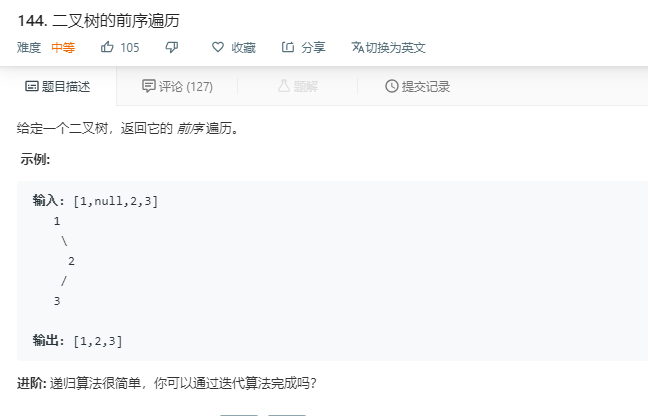
方法一:递归
vector<int> res; vector<int> preorderTraversal(TreeNode* root) { if (!root) return res; res.push_back(root->val); if (root->left) preorderTraversal(root->left); if (root->right) preorderTraversal(root->right); return res; }
方法二:非递归
vector<int> preorderTraversal(TreeNode* root) { vector<int> res; if (!root) return res; stack<TreeNode*> S; TreeNode* p = root; while(p||!S.empty()) { if (p) // 访问左子树 { res.push_back(p->val); S.push(p); p=p->left; } else // 访问右子树 { p=S.top(); S.pop(); p=p->right; } } return res; }
方法三:非递归(该方法可用于后序遍历,需要修改几处代码)
vector<int> res; vector<int> preorderTraversal(TreeNode* root) { if (!root) return res; stack<TreeNode*> S; S.push(root); while (!S.empty()) { root=S.top(); S.pop(); if (root->right) S.push(root->right); // 要实现后序遍历,需要以下两行调换 if (root->left) S.push(root->left); res.push_back(root->val); // res.insert(0,root->val)即为后序遍历 } return res; }
结论:
- 方法三这种形式只适合前序和后序遍历,不适合中序遍历,中序遍历较为麻烦
- 方法二这种形式只适合前序和中序遍历,不适合后序遍历,后序遍历较为麻烦